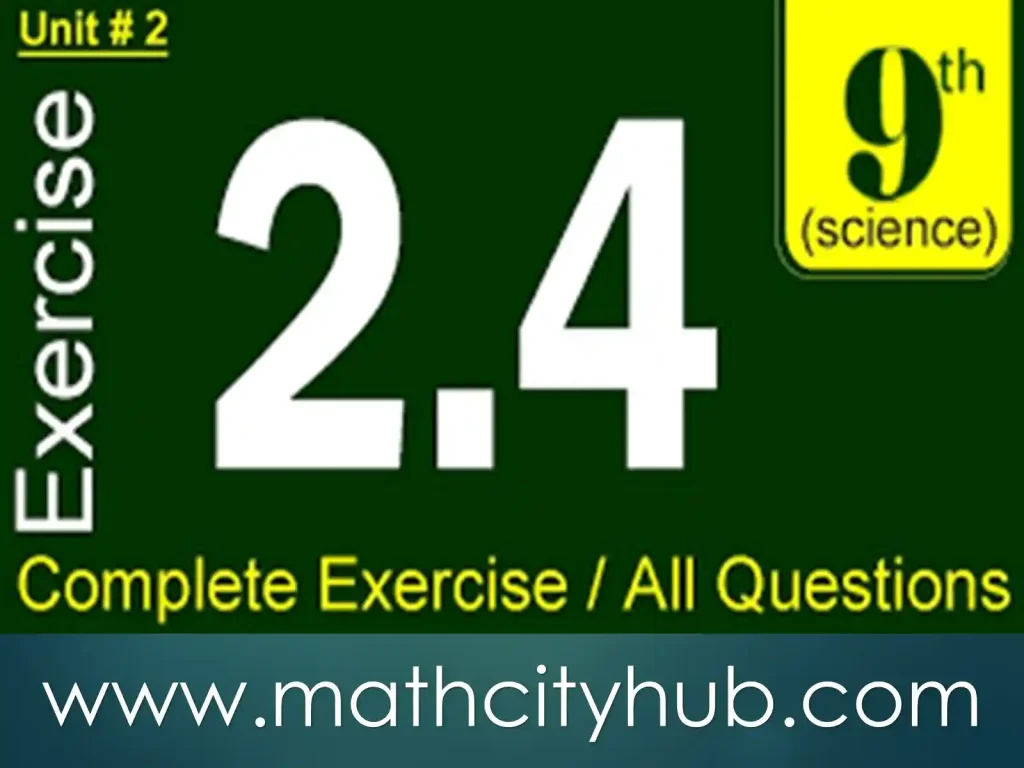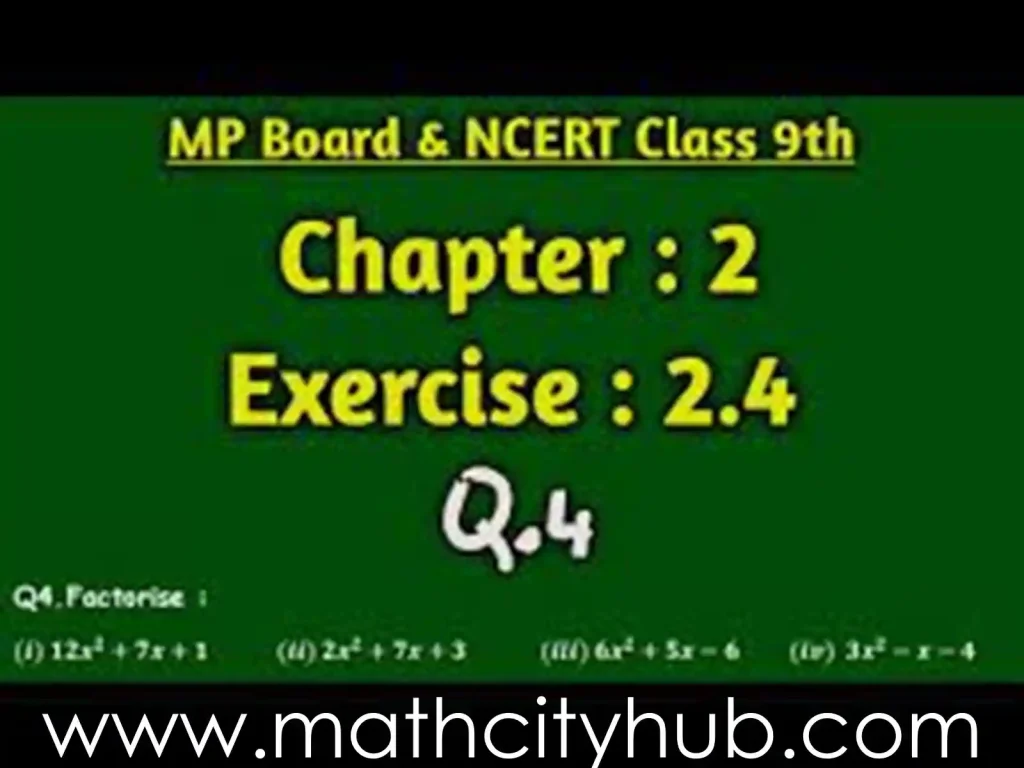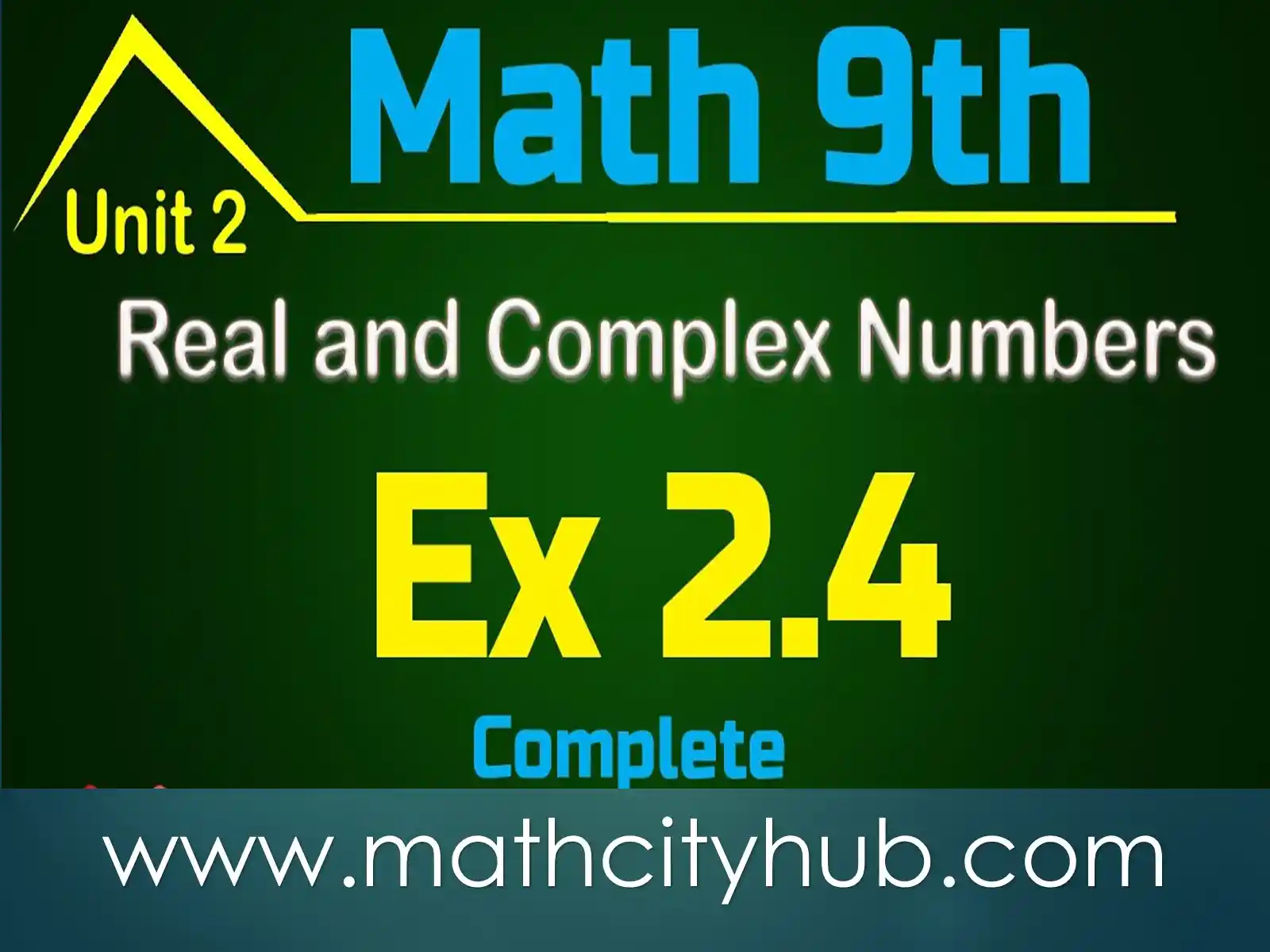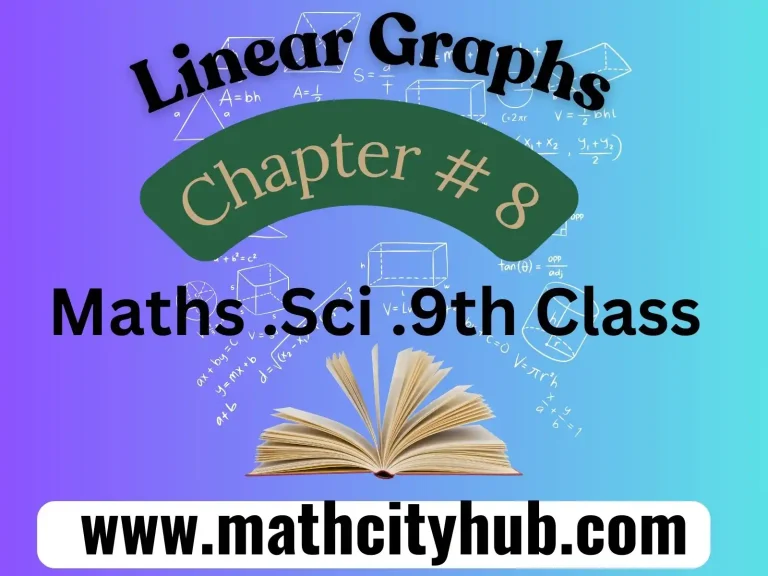Exercise.2.4:The laws of exponents form a fundamental set of rules governing the manipulation and simplification of expressions involving exponential notation. Exponents, also known as powers, are mathematical shorthand used to represent repeated multiplication of a base number by itself.
Understanding and applying the laws of exponents are essential skills in algebra and other branches of mathematics, as they provide a systematic way to simplify complex expressions and solve equations.
The laws of exponents encompass a variety of rules that dictate how to combine, multiply, divide, and raise exponential expressions to powers.
These rules streamline the process of working with large or intricate numbers and variables, enabling mathematicians and scientists to express and manipulate quantities in a more concise and manageable form.
In this exploration of the laws of exponents, we will delve into the foundational principles that govern exponential notation. Exercise.2.4:
These laws not only offer a set of guidelines for simplifying expressions but also provide a deeper insight into the underlying structure of mathematical operations involving powers.
Whether applied to algebraic equations, scientific notation, or calculus, the laws of exponents serve as a versatile toolkit, empowering individuals to navigate the complexities of mathematical reasoning with precision and efficiency.
Through this journey, we will uncover the key concepts and principles that make the laws of exponents an indispensable tool in the realm of mathematical problem-solving.
The law of exponents, also known as the power rule, provides a set of rules for simplifying and manipulating expressions involving exponents. These rules govern how we calculate with numbers raised to powers, making equations and calculations more efficient and easier to understand. Exercise.2.4:

Introduction for Math
Here are the key laws of exponents, each accompanied by an example:
1. Product of Powers with the Same Base:
a^m x a^n = a^(m+n)
- Example: 2^3 x 2^4 = 2^(3+4) = 2^7
This rule states that when multiplying powers with the same base, we add the exponents and keep the base the same.
2. Quotient of Powers with the Same Base:
a^m / a^n = a^(m-n)
- Example: 10^7 / 10^3 = 10^(7-3) = 10^4
This rule states that when dividing powers with the same base, we subtract the exponents and keep the base the same.
3. Power of a Power:
(a^m)^n = a^(m x n)
- Example: (3^2)^3 = 3^(2 x 3) = 3^6
This rule states that when raising a power to another power, we multiply the exponents.
4. Power of a Product:
(xy)^n = x^n y^n
- Example: (4a^2b)^3 = (4)^3 (a^2)^3 (b)^3 = 64a^6b^3
This rule states that when raising a product of terms to a power, we raise each term to the power separately. Exercise.2.4:
5. Power of a Quotient:
(x/y)^n = x^n / y^n
- Example: (5x/2y)^2 = (5x)^2 / (2y)^2 = 25x^2 / 4y^2
This rule states that when raising a quotient to a power, we raise the numerator and the denominator to the power separately.
6. Zero Exponent:
a^0 = 1 (except for a = 0)
- Example: 7^0 = 1
This rule states that any number raised to the power of zero equals one, except for zero itself, where the result is undefined.
7. Negative Exponents:
a^-n = 1 / a^n
- Example: 2^-3 = 1 / 2^3 = 1 / 8
This rule states that a number raised to a negative exponent is equal to the reciprocal of the same number raised to the positive exponent.
Additional notes:
- These rules apply to all real numbers and variables, not just positive integers.
- The order of operations must be followed when applying multiple rules in an expression. Exercise.2.4:
- Understanding the law of exponents is essential for solving various mathematical problems and working with complex equations in algebra, calculus, and other branches of mathematics.
By mastering these laws, you can unlock the power of exponents and simplify difficult calculations, making your mathematical journey more efficient and enjoyable.

Questions & Answers
Questions and Answers about the Law of Exponents
- Basic Concepts
- What is the law of exponents?
- The law of exponents, also known as the power rule, is a set of rules that govern how we simplify and manipulate expressions involving exponents. These rules make it easier to work with equations and calculations involving numbers raised to powers.
- What are the different types of exponents?
- There are three main types of exponents: positive exponents, negative exponents, and zero exponents. Exercise.2.4:
- Positive exponents indicate how many times a base is multiplied by itself.
- Negative exponents indicate the reciprocal of a positive exponent.
- Zero exponent indicates that the base is multiplied by itself zero times, which always equals 1 except for the base 0.
- What are the benefits of using the law of exponents?
- The law of exponents allows us to:
- Simplify complex expressions
- Solve equations more efficiently
- Understand and work with exponential functions
- Perform calculations involving powers more easily

Specific Rules
What is the product rule of exponents?
The product rule states that when multiplying powers with the same base, we add the exponents.
Example: 5^2 * 5^3 = 5^(2+3) = 5^5
What is the quotient rule of exponents?
The quotient rule states that when dividing powers with the same base, we subtract the exponents.
Example: 7^5 / 7^2 = 7^(5-2) = 7^3
What is the power of a power rule?
The power of a power rule states that when raising a power to another power, we multiply the exponents.
Example: (2^3)^4 = 2^(3*4) = 2^12
What is the zero exponent rule?
The zero exponent rule states that any number raised to the power of zero equals one, except for zero itself.
Example: 10^0 = 1 (but 0^0 is undefined)
What is the negative exponent rule?
The negative exponent rule states that a number raised to a negative exponent is equal to the reciprocal of the same number raised to the positive exponent.
Example: 4^-2 = 1 / 4^2 = 1/16
Applications
How is the law of exponents used in algebra?
The law of exponents is used extensively in algebra for simplifying expressions, solving equations, and working with exponential functions.
How is the law of exponents used in calculus?
The law of exponents plays a crucial role in calculus for understanding and differentiating exponential functions, which are fundamental to many mathematical models and applications. Exercise.2.4:
How is the law of exponents used in science and engineering?
The law of exponents is used in various scientific and engineering disciplines where exponential growth and decay are observed, such as population dynamics, radioactive decay, and electrical circuits.
These are just a few examples of questions and answers about the law of exponents. Understanding these rules and their applications is essential for successful learning and problem-solving in various mathematical and scientific fields.

Conclusion
In conclusion, the laws of exponents serve as a foundational set of rules that play a crucial role in simplifying and manipulating expressions involving powers.
These fundamental principles provide a systematic approach for dealing with exponential notation, allowing mathematicians and students alike to navigate complex mathematical landscapes with ease and efficiency.
Through the exploration of the laws of exponents, we have uncovered the versatility and applicability of these rules in various mathematical operations.
The ability to combine, multiply, divide, and raise exponential expressions to powers enables the concise representation of quantities and facilitates the solution of mathematical problems across different branches of mathematics. Exercise.2.4:
The laws of exponents not only offer a practical toolkit for simplification but also provide deeper insights into the underlying structure of mathematical operations involving powers.

From the multiplication of like bases to the handling of zero and negative exponents, these rules form an integral part of algebraic reasoning, scientific notation, and advanced mathematical concepts.
As we navigate the intricacies of mathematical expressions, the laws of exponents stand as a reliable guide, allowing us to streamline computations and express ideas in a more compact and manageable form.
Whether applied in algebraic equations, calculus, or other mathematical disciplines, these laws enhance our ability to reason mathematically and solve problems with precision. Exercise.2.4:
In essence, the laws of exponents form a cornerstone in the realm of mathematical reasoning, empowering individuals to manipulate and understand exponential expressions with confidence.
As we continue our mathematical journey, the mastery of these laws proves invaluable, contributing to a deeper comprehension of mathematical concepts and fostering a more efficient approach to problem-solving.
Must Read:
9th-Math-Ch-1-Review: Matrices And Determinants
Exercise.1.6: Solution Of Simultaneous Linear Equations
Exercise.1.5: Multiplicative Inverse a Of Matrices
Exercise.1.4: Multiplication Of Matrices
Exercise.2.2: Properties of Real Numbers
Exercise 1.3: Addition And Subtraction Of Matrices
Exercise.1.2. Types Of Matrices.
Exercise 1.1: Introduction to matrices
Exercise 4.4: Introduction to Algebraic Expressions
Math 9th Class Full Book
Exercise .2.4
Azam Bodla
M.Phil. Mathematics, Content Writer, SEO Expert
Web Developer, Online Tutor
Call or WhatsApp: +923059611600
Gmail:azambodlaa@gmail.com






